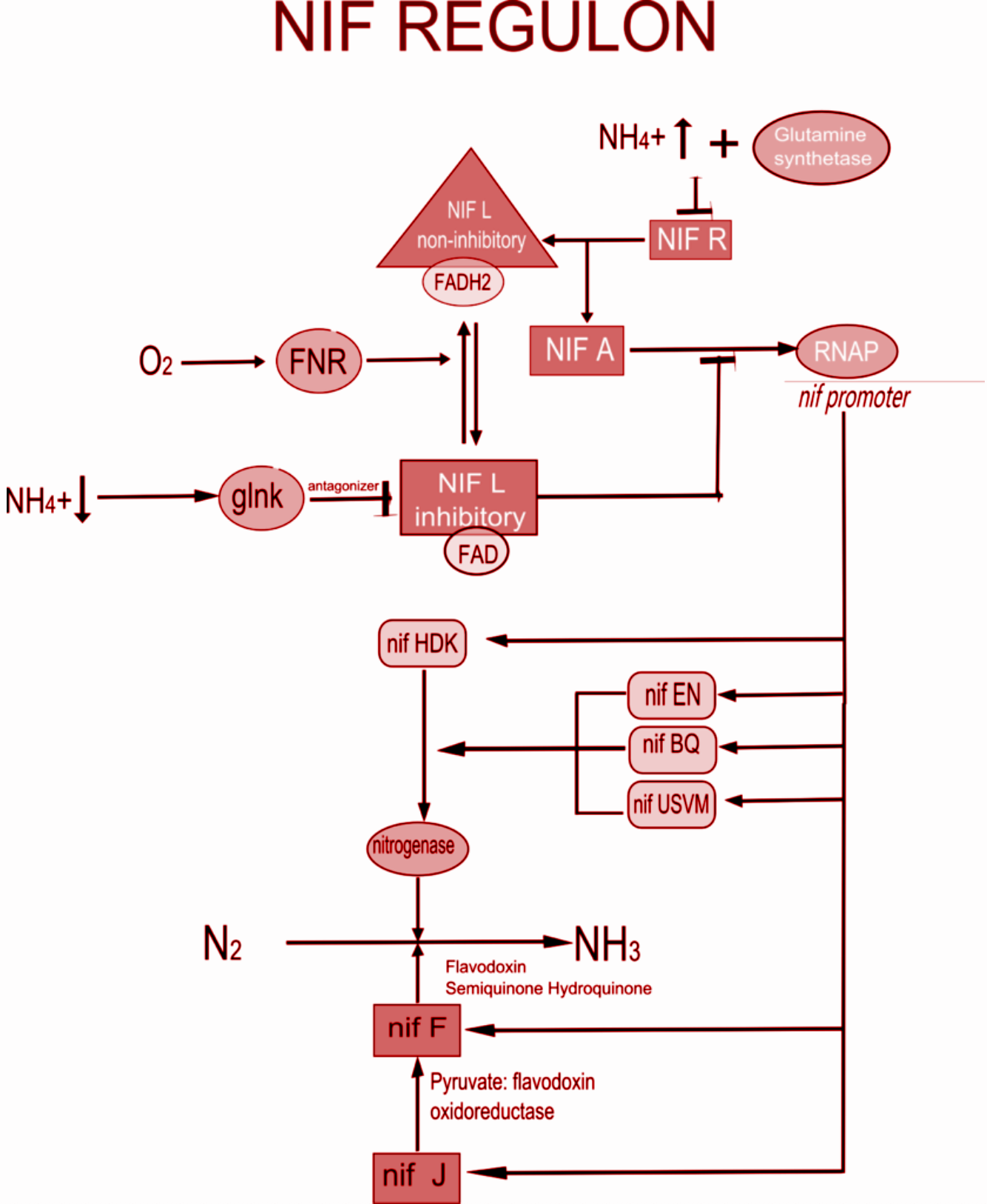Answer
414.9k+ views
Hint: The gene that is responsible for encoding enzymes involved in the fixation of atmospheric nitrogen into a form of nitrogen that can be easily used by the plant is called the ‘Nif’ gene. The nitrogenase complex is the primary enzyme that is encoded by the ‘Nif’ gene. It is responsible for converting atmospheric nitrogen to ammonia.
Complete step by step answer:
The ‘Nif’ gene for nitrogen fixation in cereal crops like wheat, jowar, etc., is introduced by cloning the bacteria Rhizobium melloti. Rhizobium melloti a gram-negative bacterium that forms a symbiotic relationship with legumes from the genera Medicago, Melilotus, and Trigonella. The bacteria belong from the Rhizobiaceae family. This symbiosis (a mutual association benefitting both the organisms) results in the formation of a new plant organ termed as root nodule and is deemed symbiotic as it leaves excess nitrogen behind for the plant.

So, the correct answer is, ‘(a) Rhizobium melloti’.
Additional information:
- Gary Ruvkun and Sharon R. Long cloned the first Rhizobium genes for nitrogen fixation (Nif) and nodulation (nod) in the early 1980s, in Frederick M. Ausubel's laboratory.
- Cloning is the process of producing individuals with identical DNA, either naturally or artificially. Clones can be produced by asexual reproduction, found in many organisms
- The expression of ‘Nif’ genes is induced as a response to low concentrations of fixed nitrogen and oxygen (the low oxygen concentrations are actively maintained in the root environment of host plants).
- In the case of free bacteria the ‘Nif’ genes can be found on the bacterial chromosomes, but in symbiotic bacteria, they are often found on plasmids.
Note:
- Besides the nitrogenase enzyme, the ‘Nif’ genes also encode several regulatory proteins. Such proteins are also involved in nitrogen fixation.
- ‘Nif’ genes are found in both free- living nitrogen- fixing bacteria and symbiotic bacteria associated with various plants in their roots.
Complete step by step answer:
The ‘Nif’ gene for nitrogen fixation in cereal crops like wheat, jowar, etc., is introduced by cloning the bacteria Rhizobium melloti. Rhizobium melloti a gram-negative bacterium that forms a symbiotic relationship with legumes from the genera Medicago, Melilotus, and Trigonella. The bacteria belong from the Rhizobiaceae family. This symbiosis (a mutual association benefitting both the organisms) results in the formation of a new plant organ termed as root nodule and is deemed symbiotic as it leaves excess nitrogen behind for the plant.

So, the correct answer is, ‘(a) Rhizobium melloti’.
Additional information:
- Gary Ruvkun and Sharon R. Long cloned the first Rhizobium genes for nitrogen fixation (Nif) and nodulation (nod) in the early 1980s, in Frederick M. Ausubel's laboratory.
- Cloning is the process of producing individuals with identical DNA, either naturally or artificially. Clones can be produced by asexual reproduction, found in many organisms
- The expression of ‘Nif’ genes is induced as a response to low concentrations of fixed nitrogen and oxygen (the low oxygen concentrations are actively maintained in the root environment of host plants).
- In the case of free bacteria the ‘Nif’ genes can be found on the bacterial chromosomes, but in symbiotic bacteria, they are often found on plasmids.
Note:
- Besides the nitrogenase enzyme, the ‘Nif’ genes also encode several regulatory proteins. Such proteins are also involved in nitrogen fixation.
- ‘Nif’ genes are found in both free- living nitrogen- fixing bacteria and symbiotic bacteria associated with various plants in their roots.
Recently Updated Pages
How many sigma and pi bonds are present in HCequiv class 11 chemistry CBSE

Why Are Noble Gases NonReactive class 11 chemistry CBSE

Let X and Y be the sets of all positive divisors of class 11 maths CBSE

Let x and y be 2 real numbers which satisfy the equations class 11 maths CBSE

Let x 4log 2sqrt 9k 1 + 7 and y dfrac132log 2sqrt5 class 11 maths CBSE

Let x22ax+b20 and x22bx+a20 be two equations Then the class 11 maths CBSE

Trending doubts
Fill the blanks with the suitable prepositions 1 The class 9 english CBSE

At which age domestication of animals started A Neolithic class 11 social science CBSE

Which are the Top 10 Largest Countries of the World?

Give 10 examples for herbs , shrubs , climbers , creepers

Difference between Prokaryotic cell and Eukaryotic class 11 biology CBSE

Difference Between Plant Cell and Animal Cell

Write a letter to the principal requesting him to grant class 10 english CBSE

Change the following sentences into negative and interrogative class 10 english CBSE

Fill in the blanks A 1 lakh ten thousand B 1 million class 9 maths CBSE



